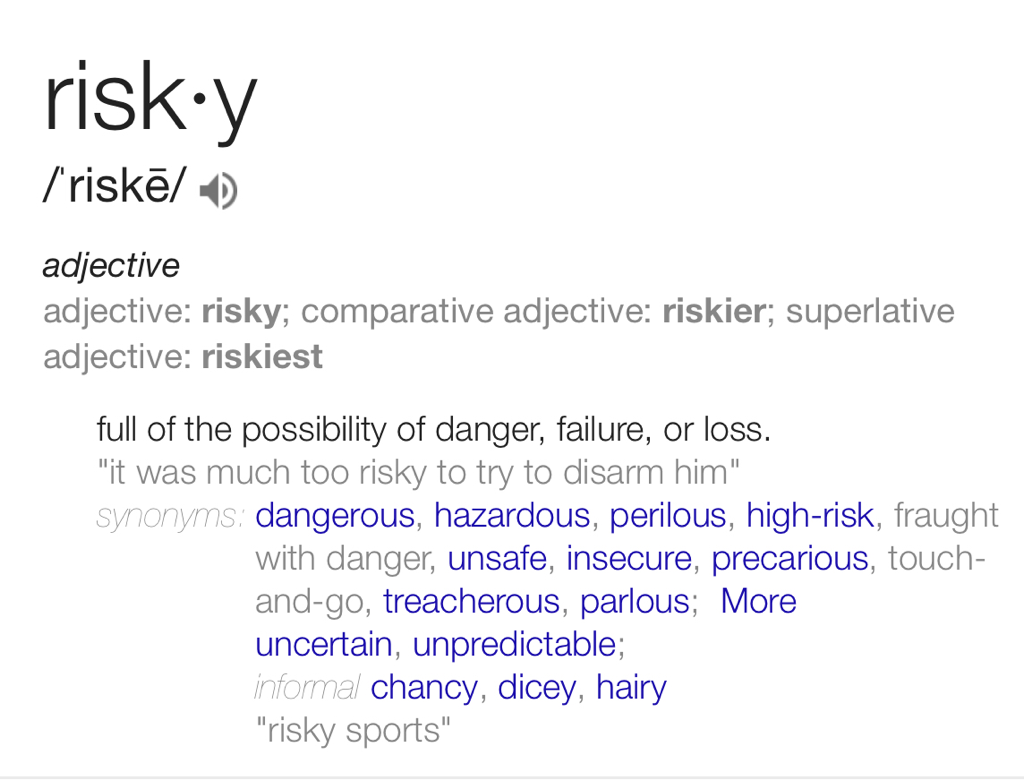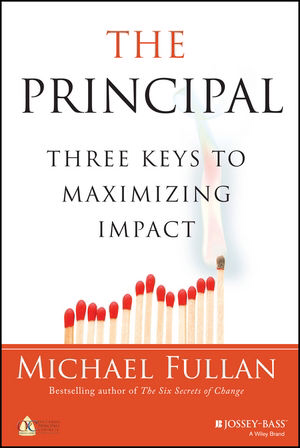|
Over the past few weeks, I have been stopped by a teacher who, for a lack of better word, struggles. I will be clear, she never struggled in the way that I questioned whether she should teach - she has the heart of a teacher. She struggled in the way many teachers do. She questions her worth, whether she is making a difference, and whether or not she should keep teaching. I am not surprised we have had the recent conversations we have had. Today was our latest conversation.
Today, I was busy. I had meetings all morning, was in the building for just a short while, then had to leave again early. My time in my office and completing my tasks was my top priority. Then, she walked in. She did that, “Hey, do you have a minute?” thing that everyone answers first in their heads, filters it, then replies. I of course said, “No, I am really busy, but come on in.” I struggle sometimes being “on-demand.” We walk into my office and take a seat. I am at my desk, straightening things up. I am half heartedly paying attention. Then, she says it. “Thank you.” She had my attention. This teacher began stating how this is one of her best years. That she is taking risks and doing things she never would have done in the classroom. She talked about how she is making deeper relationships with students and finding they are rising to her higher expectations. She is collaborating with her peers in PLC and taking their ideas and trying them after tweaking them to her style. She isn’t afraid to fail. At that moment, I was fully re-engaged. My management hat was off and my instructional leader hat was on full display. She came into my office, took a risk, and won my attention. This teacher reminded me today of a few things:
This teacher is every teacher - every school professional. We question our worth, our value daily. These teachers have the efficacy to get the job done and done well. Sometimes they (we) lack the confidence because we are scared, unsure, or tired. I personally have spent a lot of time this afternoon reflecting on this teacher’s journey by putting the pieces together and trying to read the map that lead her from Point A to Point B. There is no map, just trust and awareness that good teaching and learning has a level of risk.
0 Comments
 This semester has brought a word back to my mind on occasion. That word is "persistence." When I think of the teachers I admire most, that is the word that rings through. As defined on webster.com, persistence is a "to go on resolutely or stubbornly in spite of opposition, importunity, or warning." I think back to my teachers. The ones that I admire today. They were persistent. With the end of the year quickly approaching, it rings true. I recently listened to a podcast "What To Do On Lame Duck School Days." The podcast and accompanying article features low and high value items to do during "downtime". The ideas feature go beyond the "show a movie" that we have all encountered. Although the list contains some low-value items that don't connect curriculum, there are many ideas on what can filled with educational value. We have to be persistent in focusing on education until the last day. With summer brain drain on the horizon, we need to make sure that students are pushed until the final day of school. We can't afford to quit on May 1st or once prom is over. We must be persistent in focusing on continued learning. We must be persistent that students behave at high expectations. We must be persistent that students are engaged. To do so, we may have to get more creative this time of year.
Snow Days! A day both loved and hated by school personnel. It always seems that timing is everything. The day's "worth" or "value" all depends on the week's schedule, how long it has been since the last day off, and how long into June might we have to go until the warm summer days are impacted.
I can't deny the day's value for me. I slept in. I napped (I never nap). I played Super Mario Brothers. I built legos. I invested in my own learning <<insert sound of a needle screeching on a record and a whip of a head>> I see "Snow Days" as "Grow Days". Besides growing with my family, I like to spend time on those things that I seldom have time to do (or commit to do) on a normal day. Today, I plunged into our semester ending data and began reflecting on our building goals that we have yet to achieve for the end of the year. I asked myself "what do we need to do?" while filtering it with "what can I get teachers to do without a tyranny or pitchforks?" That took me to YouTube... Having just completed a session on McREL's Balanced Leadership, I filtered our goals through the Classroom Instruction that Works materials, made connections, and sent some of my learning/findings to teachers. The first video that I repeatedly watched connected to our goal of setting objectives in the form of content and language targets. This video (starting at 1:43) nails our goal of implementing this with fidelity: After I shared this video over email and Twitter with staff, I made a snack. I mean, it is a snow day... While the videos aimlessly rolled on YouTube, a video of a Webinar from about Hattie's work on "Visible Learning for Literacy" began to play. This is a book I have been slowly learning through this year. I get to spot that validates and challenges the work we are doing and I stop reading to focus on improving. This webinar had fantastic timing due to the data I examined and our goal of using "Elaborated Communication" as a tool to deepen learning. I realized I stopped reading and was focusing on "Surface Level" strategies and hadn't made it to "Deeper Learning." I need to read on! I love Snow Days. I love Grow Days. Up next: Culturally Responsive Teaching "Becoming a Culturally Responsive Teacher. Some kids are scared. I don't write this for propaganda or other political influence. It's the facts. Prior to the election, students were having conversations about what will happen if one candidate got into office. Today, that is a reality for them. What's next?
We have over 600 Hispanic students in our school. That is our largest subgroup of students. Some were born here, some immigrated, some are refugees, and yes, some may even be here illegally. But it's not just our Hispanic students that have made mention of the new realities in which we live. We have had black students feel as if they lost a voice. We have had East African students worry about families being able to visit or if they will be able to return to visit them. That is just the ethnic and racial aspects. We have a strong LGBTQ and Muslim population as well who may now struggle to find their voice and place in our community. But, that's our job as school leaders. We set the tone and direction for all of our kids. First thing this morning, the administrative banter began to discover how we ensure a "smooth transition of power" for our kids? How do we reduce the anxiety of the election results for some of our students while allowing for students on the other side of the issue to feel pride and success? We shared ideas, read articles, shared thoughts, and crafted words. We wanted our kids - no matter the subgroup - to know that they were our kids and we have their backs or supported their beliefs even if we don't as adults. That starts with empathy and understanding. We sent a common message and the staff response was immense. Our teaching and learning staff have seen change and evolved to embrace it. We are the most diverse school in Western Iowa. This is a very, very foreign concept to our community and not well understood by others in our state. Our students do not look or sound like those of the rural, farming communities that surround us in the Midwest. They don't have the same life experiences or backgrounds. We speak 15 different languages and have 51 students in our school who are new to the country. We are their first taste of America. I wouldn't trade one of our urban 1,498 students for the world. Each one of them gives me hope that, generationally, we are progressing and becoming a better populous. We will continue to prepare our students for a global economy. We will teach them humility and respect. We will hold them to high expectation. We will support them. We will teach them democracy built on the premise of "life, liberty, and the pursuit of happiness." We will encourage them to be civically minded and to act on the ideaology they choose. As a principal, I never thought I would need to write about a presidential elections impact. I pray that I never have to again. As a student body and a staff, we will move on and grow from this. As I see it, it is like planting a tree. Years from now we will reap the benefits of what is sowed today - sometimes we have to weather storms to get there. All storms pass. I have been with the same school district since the fall of 2010. One of the first things I remember learning is that it was a district expectation that teachers post "student friendly learning targets in 'I can' statements." Our walkthrough form had a section where the target is identified as posted or not posted. I learned that it was an expectation teachers struggle with achieving. Fast forward six years... The expectation has not changed and neither had the struggle for teachers to consistently post targets. Human nature tells me that with 100 teaching staff members, a few will forget to post or change them on any given day. Looking back on walkthrough data our school building consistently posts and teaches content learning targets 81% of the time. Why is it not 100% or at least extremely close? So, I asked teachers... Answer 1: We get busy and we forget to post them. Answer 2: The students don't look at them. Answer 3: I don't see how they help. I don't believe in them. These answers made me realize the "mandate to post" targets was heard more than the "mandate for posting" targets. We want to ensure students understand the relevancy and "why" of learning something. We must do the same here. What is the Mandate for Posting Learning Targets? Below are the four points that, I believe, sell posting targets in clsssrooms. Just Posting Targets Will Do Nothing Having well written targets on the board does nothing to support learning if they are not explicitly taught to students. Students must understand what the target means and understand it's connection to the day's activities. Teachers who start with the target, refer back to the target, assess the target, and holds closure on the target will have deeper student understanding - if the student understand the learning target. Having them visual supports our English Language Learners. Targets Must Tie to Common Formative Assessments As a student, if I read a target as "what" I am learning today, how will I know I learned it? The content of the target is the most important concept, problem, or theme of the unit or lesson. Teachers should be developing formative assessments that measure the content learning target. This allows the student to assess his or her learning and the teacher can examine data to determine progress of learning. It Is Research Based McREL completed a study update on Classroom Instruction That Works in 2010 (1) and showed the effect size of posting objectives as 0.31. This would equate to 9-10 month's growth in student learning. The key to it being research based is that it is used to connect students to learning. When written as "I can" statements it sets the stage for the student to self assess learning. We Missed the Boat The video below is researcher John Hattie who explains how posting Learning Targets without also addressing success criteria weakens the goal. Students must not merely know "what" or "how" they are going to learn but also what the criteria is to be successful at a high level. Posting targets must be about the "what" (content target) and the "how" (language target). We must also present, for understanding, the criteria for achieving the learning of the target. Students must know what they are learning, how they are learning it, and the criteria set to measrlure if they learned and at what level. What we are learning (Content Target) How we are learning the content (Language Target) When will we know we have been successful (Success Criteria) 1. http://www.ascd.org/publications/books/111001/chapters/Setting-Objectives-and-Providing-Feedback.aspx "The heart of this book is to reposition the role of the principal as overall instructional leader so that it maximizes the learning of all teachers and in turn all students." (p. 6 ) My first read of the summer has been a book that has graced my shelf for a few years. The Principal: Three Keys to Maximizing Impact by Fullan finally called to me and got me reflecting on my role. The timing of Fullan's vision (or me pulling it from the shelf) and my need to refocus my leadership attention was key to a relevant read. The three main take always from this reading were as follows:
Category: Culture of Learning
|
Author
Ryan Dumkrieger is the principal of Sioux City North High School. Archives
December 2017
Categories
All
|



 RSS Feed
RSS Feed
